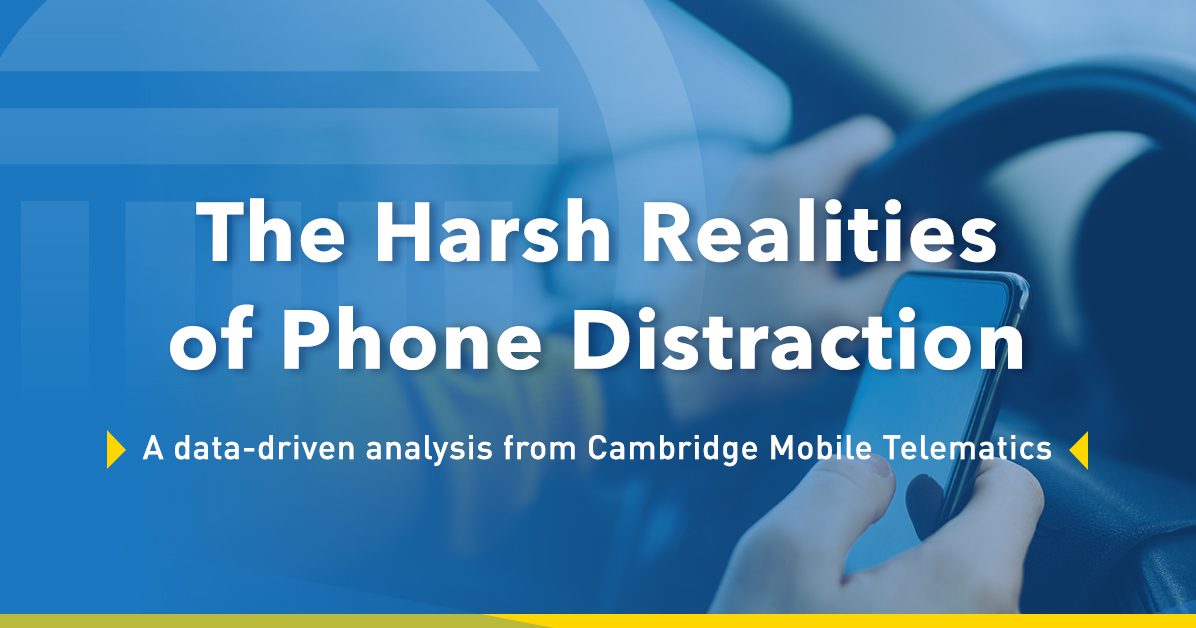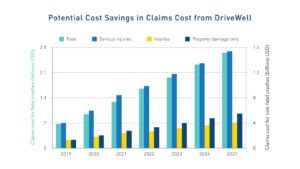Can we Avoid 21,000 Deadly Crashes in the Next Five Years?

In our final installment of the 2020 distracted driving blog series, we look at possible future scenarios given the current trajectory of phone-based distraction. What impact will it have on road casualties in the U.S., and what difference will various solutions make?
Forecasting the evolution of distraction at the wheel is a delicate operation that is fraught with peril. So we only tried to suggest a possible evolution based on known factors. For example, we know how the penetration of smartphones in drivers’ cars is evolving. We also know how many miles are being driven through the country and how that’s evolving.
Thirdly, we have very precise information on how the average share of distracted trips per state and nationwide has been growing. Finally, CMT’s analysis of crashes from claims data shows that at least 19% were attributable to phone-based distraction.
Using the above factors and our analysis, we estimated that the next 5 years could see up to 21,799 fatal crashes and 4.7 million accidents causing bodily injury or property damage, linked to phone distraction.
What is frightening is that the curve is not growing particularly fast. This is the trend that already exists in the U.S. today. In fact it also takes into account the recent drop in Vehicle Miles Travelled (VMT) linked to the Covid pandemic. It is simply staggering how many people are affected by distracted driving.
In this forecast we looked at the future potential impact of changes in the hands-free law. We also analyzed what other countries have done to reverse the trend. Sadly, the present changes in the laws are so ineffective on account of their complexity and the multiple exceptions depending on age, experience, and vehicle driven, that we could not account for any impact from them on the forecast.
What we saw in terms of laws outside the U.S. with actual impact on reducing road fatalities is a complete ban on the use of phones for all drivers equally. This is the case throughout Europe but given that these laws are made at the state level, and the states are unlikely to cede that control over policy, it is politically not going to happen. So until the relationship between the U.S. government and the states radically changes, other means of addressing phone distraction behind the wheel will be needed.
Since the results of the use of UBI apps on driving behavior have proven very positive in the various cities and insurance programs where it has been deployed, we built a best case scenario to illustrate their impact in the long term.
A number of assumptions were needed here. For example, we needed to assume that in the forecasted volume of crashes linked to phone use, distraction was the only cause. Therefore a reduction in distraction would directly reflect on these crashes volume.
We then looked at the claims costs of those crashes depending on the speed at which we know distraction is taking place. And from our analysis, when suggesting that 25% of the population is using mobile telematics, we estimated the savings on injury and property claims would surpass $2.5 billion.

The estimation is worth the mention because the cost of all claims related to phone distraction for 2020 (including fatalities) is already over $1 billion. However, this only represents a small fraction of the true cost of these tragedies. Yet if mobile telematics can save ONE life, can we really put a price on that?
More details on the methodology and results of this analysis can be found in the report “The Harsh Realities of Phone Distraction” which is free to download.